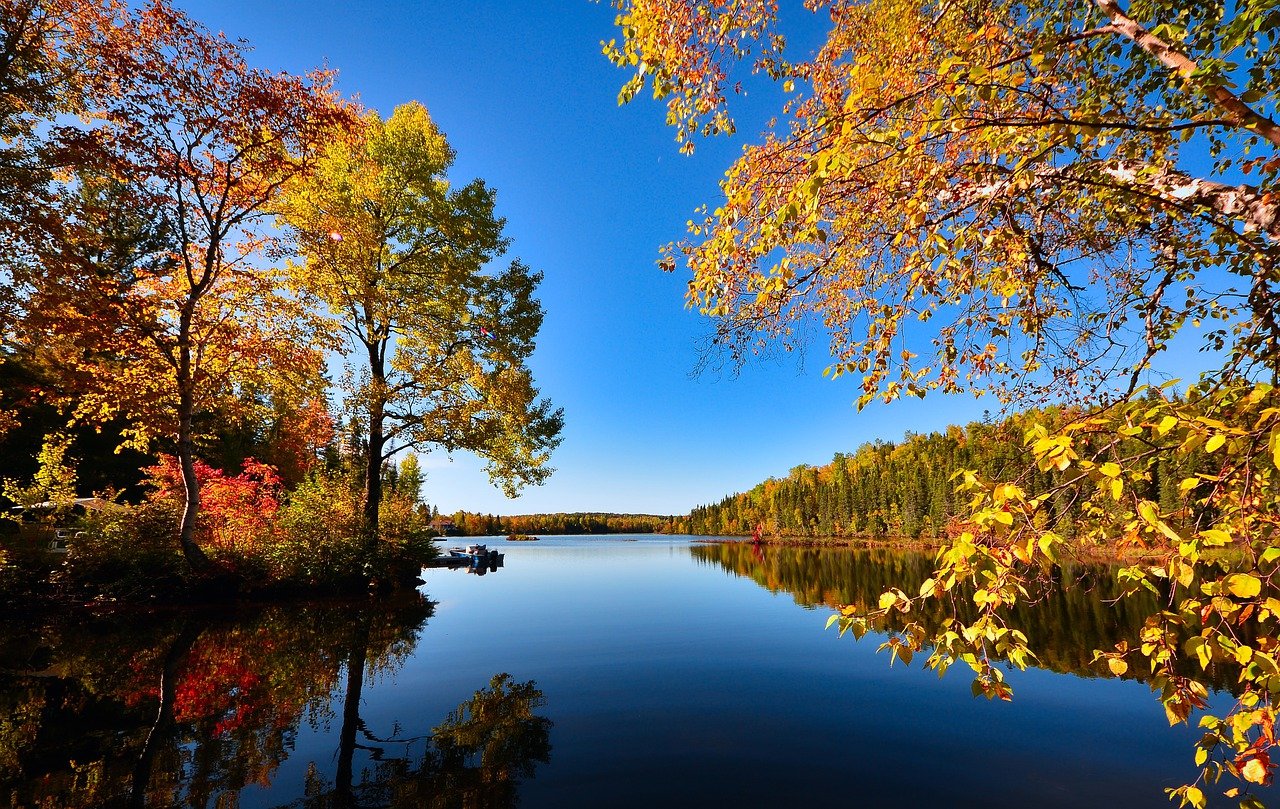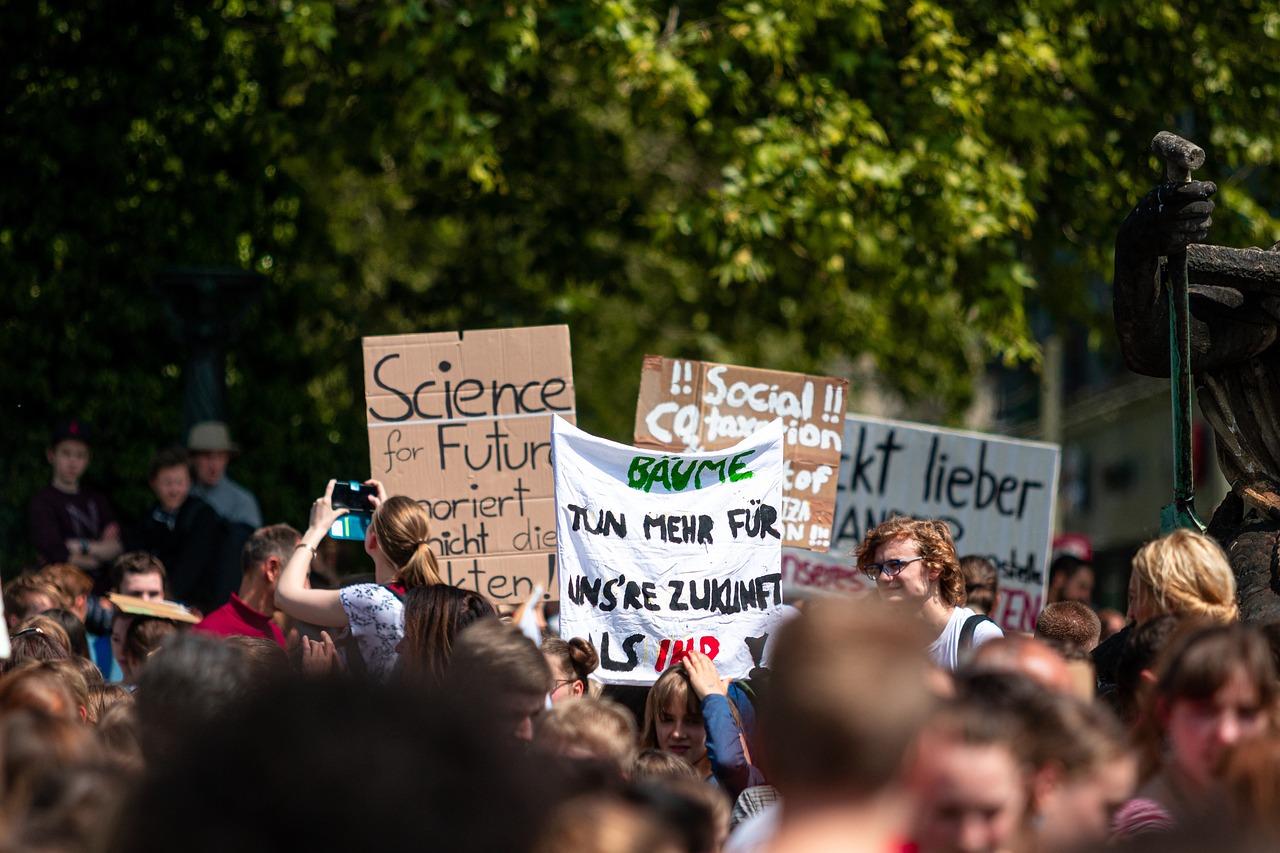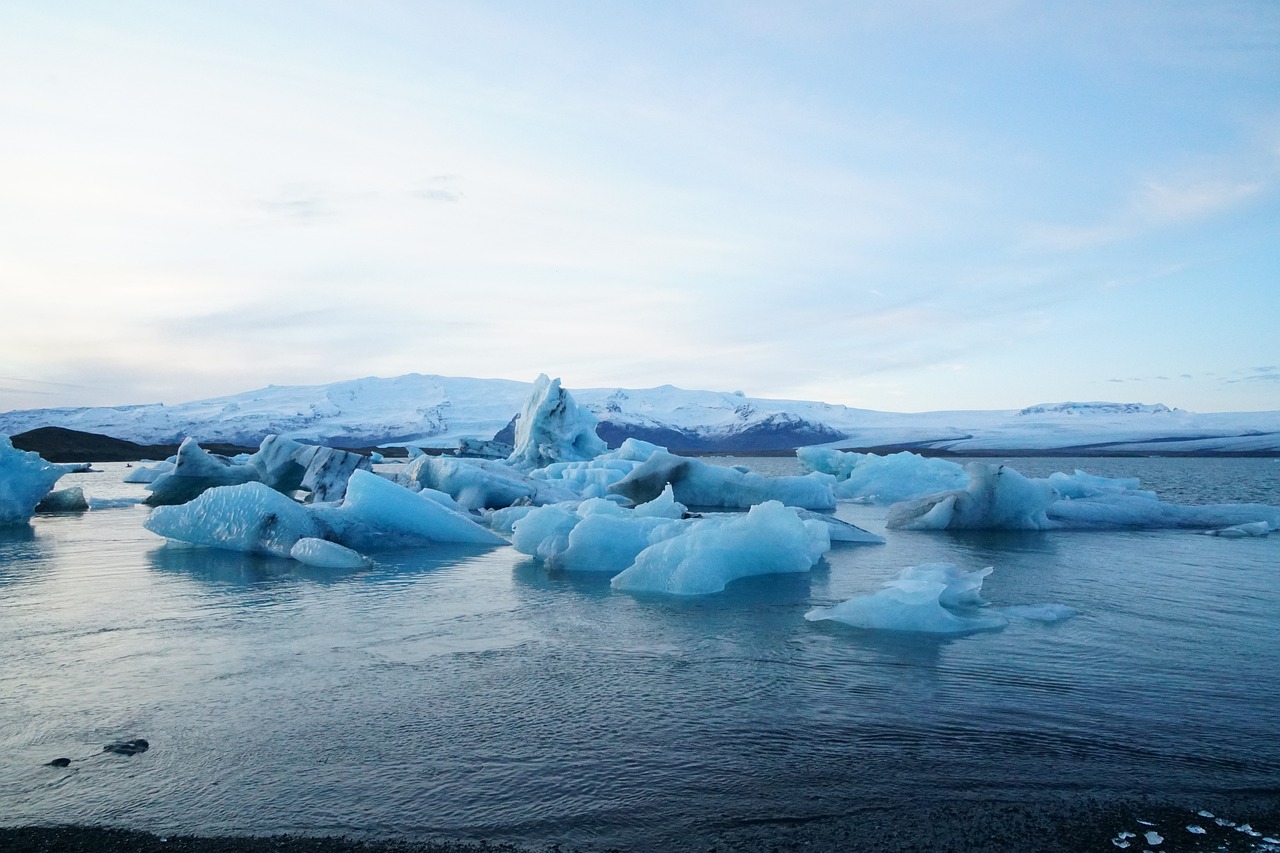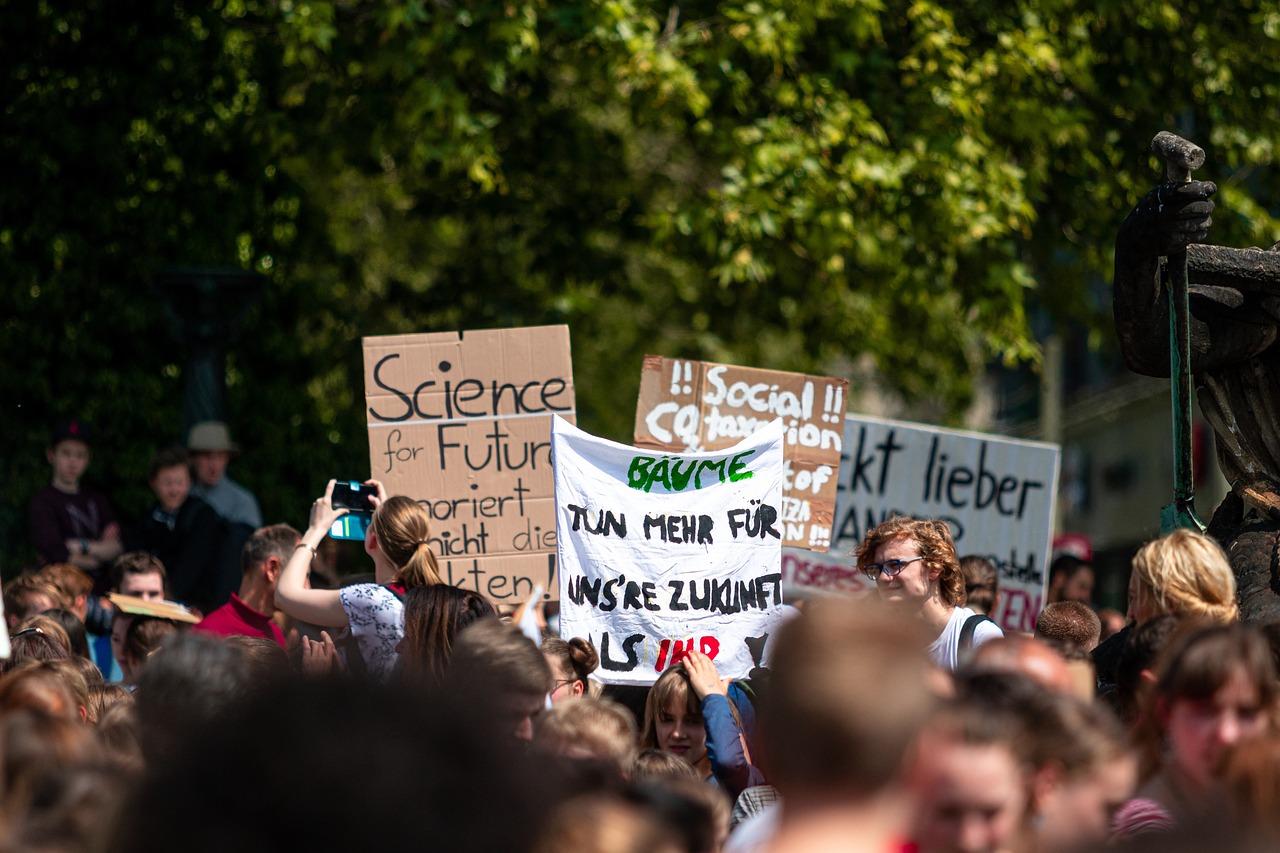Does Climate Change Encourage the Spread of Viruses?
Climate change is not just about rising sea levels and melting ice caps; it is also a significant factor influencing the emergence and spread of infectious diseases, including viruses. As our planet warms, the delicate balance of ecosystems is disrupted, leading to unforeseen consequences for public health. Imagine a world where familiar viruses take on new forms, spreading into areas where they were once nonexistent. This is not just a possibility; it's a growing reality as climate change alters habitats, human behavior, and the very conditions in which viruses thrive.
The intricate relationship between climate change and viral outbreaks is a complex web of interactions. From temperature fluctuations to changes in humidity, these environmental shifts create a breeding ground for viruses, allowing them to evolve and spread more efficiently. As we delve deeper into this topic, we will uncover how these factors intertwine, leading to increased risks for human populations worldwide.
One of the most alarming aspects of this phenomenon is how climate change can facilitate the movement of viruses across geographical boundaries. As temperatures rise, regions that were once inhospitable to certain viruses may become suitable habitats for their vectors, such as mosquitoes. This not only increases the risk of local outbreaks but also poses a threat to global health security as these viruses travel to new territories, often with devastating effects.
Moreover, the behavioral changes induced by climate change—such as increased urbanization and altered travel patterns—further complicate the situation. As people migrate in search of better living conditions or due to climate-related disasters, they may inadvertently carry viruses to new locations. This interconnectedness of our world means that a virus can spread rapidly, transcending borders and affecting populations far removed from its original source.
In conclusion, the relationship between climate change and the spread of viruses is a pressing concern that requires our attention. As we continue to witness the impacts of climate change on our environment, it is crucial to understand how these changes can facilitate the emergence of new viral threats. By raising awareness and taking proactive measures, we can work towards mitigating these risks and protecting public health in an increasingly unpredictable world.
- How does climate change affect virus transmission? Climate change influences temperature, humidity, and ecosystems, which can enhance viral replication and survival, leading to increased transmission rates.
- What role do vectors play in the spread of viruses? Vectors like mosquitoes are affected by climate change, as shifts in temperature and habitat can lead to the emergence of vector-borne diseases such as Zika and dengue fever.
- Can human behavior influence the spread of viruses due to climate change? Yes, changes in human behavior, such as migration and urbanization, can create conditions that facilitate the spread of viruses.
- What measures can be taken to mitigate the risks associated with climate change and viral outbreaks? Increasing public awareness, improving surveillance systems, and investing in healthcare infrastructure are crucial steps in addressing these challenges.

The Link Between Climate Change and Infectious Diseases
Climate change is not just a distant threat; it’s a reality that is reshaping our world in profound ways. One of the most alarming consequences of these changes is the potential rise in infectious diseases, particularly those caused by viruses. As the planet warms, we are witnessing a shift in ecosystems, which can lead to the emergence of new pathogens and the re-emergence of old ones. This intricate relationship between climate change and infectious diseases is a complex web of interactions that we are only beginning to understand.
To grasp this connection, we need to consider how climate change alters the natural environments that viruses inhabit. For instance, rising temperatures can expand the habitats of various vectors, such as mosquitoes and ticks, which are notorious for transmitting diseases. As these vectors thrive in warmer climates, they can invade new areas, bringing with them the viruses they carry. This not only increases the risk of outbreaks in regions previously untouched by these pathogens but also intensifies competition for resources among species, potentially destabilizing local ecosystems.
Moreover, climate change influences weather patterns, which can affect the lifecycle of viruses. For example, heavy rainfall can create breeding grounds for mosquitoes, leading to increased transmission of diseases like malaria and dengue fever. On the other hand, droughts can stress populations, making them more susceptible to infections. The interplay between these environmental factors and the biological behaviors of viruses is crucial in understanding the potential for future outbreaks.
Another critical aspect to consider is the role of human activities in exacerbating these issues. As people migrate due to climate-related disasters or changes in agricultural viability, they may carry viruses to new locations. Urbanization, often a response to the pressures of climate change, can lead to crowded living conditions, where diseases can spread more easily. The combination of environmental changes and human behavior creates a perfect storm for the rise of infectious diseases.
In summary, the link between climate change and infectious diseases is multifaceted and deeply concerning. As we continue to experience shifts in our climate, the implications for public health become increasingly significant. Understanding this relationship is crucial for developing effective strategies to mitigate the risks associated with viral outbreaks in a changing world.
- How does climate change impact the spread of viruses?
Climate change alters ecosystems, allowing vectors like mosquitoes to thrive in new areas, which can lead to the spread of viruses. - What role do human behaviors play in viral transmission?
Human migration and urbanization can create conditions that facilitate the spread of infectious diseases. - Can climate change lead to new viral outbreaks?
Yes, as environments change, new pathogens may emerge, and previously controlled diseases may re-emerge in new regions.

Temperature Variations and Viral Activity
When we think about climate change, our minds often jump to extreme weather events or rising sea levels. However, one of the less obvious but equally concerning consequences is the effect of temperature variations on viral activity. As temperatures rise, we are not just talking about a warmer planet; we are also looking at a potential increase in the frequency and intensity of viral outbreaks. But how exactly does this happen? Let’s dive deeper into the science behind it.
Viruses are incredibly adaptable organisms. They thrive in specific environmental conditions, and temperature plays a critical role in their lifecycle. For instance, warmer temperatures can enhance the replication rates of certain viruses, allowing them to multiply more rapidly and spread more easily among hosts. This is particularly alarming when we consider that many viruses, such as the influenza virus, are known to be sensitive to temperature changes. As the planet heats up, the conditions may become increasingly favorable for these viruses to flourish.
Research has shown that temperature fluctuations can lead to significant shifts in viral transmission dynamics. For example, studies have indicated that a rise in average temperatures can extend the seasons during which certain viruses are active. This means that instead of being confined to specific months of the year, viruses could potentially circulate year-round, increasing the risk of widespread outbreaks. Imagine a world where flu season never really ends; that’s the kind of future we might be heading towards if current trends continue.
Moreover, the relationship between temperature and viral activity is not just limited to the viruses themselves. It also affects the hosts that carry these viruses. Warmer temperatures can alter the behavior and distribution of animals and insects that serve as reservoirs for viruses. For instance, mosquitoes, which are notorious for spreading diseases like Zika and dengue fever, thrive in warmer climates. As temperatures rise, these vectors may expand their geographical range, bringing viruses to new regions where people have little to no immunity.
To better understand this complex relationship, let’s look at a table that summarizes some key viral diseases and their sensitivity to temperature changes:
| Virus | Optimal Temperature Range | Impact of Rising Temperatures |
|---|---|---|
| Influenza | 30-40°C | Increased replication and prolonged seasonality |
| West Nile Virus | 20-35°C | Expanded geographical range and higher transmission rates |
| Dengue Fever | 25-30°C | Higher incidence in warmer climates |
In summary, the implications of temperature variations on viral activity are profound and multifaceted. As we continue to grapple with the reality of climate change, it is crucial to consider how these environmental shifts can influence the emergence and spread of infectious diseases. Understanding this relationship is not just an academic exercise; it has real-world implications for public health, policy-making, and our overall approach to disease prevention.

Humidity and Virus Survival
When we talk about viruses, we often think about how they spread from person to person or through contaminated surfaces. However, one crucial factor that plays a significant role in their survival is humidity. You might be surprised to learn that the moisture content in the air can either enhance or diminish a virus's ability to persist in the environment. So, how does this work exactly? Well, let's dive into the science.
Viruses are quite the resilient little creatures. They can survive outside a host for varying lengths of time, depending on environmental conditions. Humidity is a game-changer in this regard. High humidity levels can actually help some viruses survive longer in the air and on surfaces. For instance, studies have shown that respiratory viruses like influenza thrive in specific humidity ranges, making them more infectious during certain seasons. This is why you might notice an uptick in flu cases during the colder months when indoor heating systems dry out the air, leading to lower humidity levels.
On the flip side, extremely low humidity can lead to a decrease in virus survival. When the air is too dry, viruses tend to lose their protective lipid layers, making them more vulnerable to environmental factors. Think of it like a balloon: when you fill it with too much air, it pops, but when the air is just right, it holds its shape. The same principle applies to viruses and their survival in different humidity levels.
To put it simply, the relationship between humidity and virus survival is a delicate balance. Here’s a quick overview of how different humidity levels can impact viruses:
| Humidity Level | Impact on Virus Survival |
|---|---|
| Low (< 30%) | Decreased survival; viruses become more fragile. |
| Optimal (30% - 60%) | Increased survival; viruses remain stable and infectious. |
| High (> 60%) | Variable impact; some viruses thrive, while others may degrade. |
As we continue to witness the effects of climate change, it’s essential to consider how increased humidity levels—due to rising temperatures and changing weather patterns—could potentially alter the landscape of viral infections. For example, regions that were previously too dry may become more humid, creating a more favorable environment for viruses that thrive in such conditions. This shift could lead to an increase in outbreaks of diseases that were once confined to specific geographic areas.
In conclusion, understanding the interplay between humidity and virus survival is crucial in predicting and managing viral outbreaks. As climate change continues to reshape our environment, it's vital to keep an eye on how these changes might influence viral behavior and, ultimately, public health.

Impact on Respiratory Viruses
The relationship between climate change and respiratory viruses is a complex web that intertwines environmental factors with human health. As the climate warms, we are witnessing shifts in weather patterns that can significantly affect the transmission dynamics of respiratory viruses, such as influenza and coronaviruses. These viruses are particularly sensitive to changes in humidity and temperature, which can create an environment conducive to their survival and spread.
Research indicates that specific humidity levels can enhance the stability of respiratory viruses in the atmosphere. For instance, studies have shown that the influenza virus thrives in conditions of low humidity. When humidity levels drop, the virus can remain airborne for longer periods, increasing the likelihood of transmission from person to person. This scenario raises a pressing question: as climate change leads to fluctuating humidity levels, are we setting the stage for more frequent and severe outbreaks of respiratory illnesses?
Moreover, rising global temperatures can create a favorable environment for viral replication. Higher temperatures can accelerate viral replication rates, meaning that once a virus enters a host, it can multiply more quickly, increasing the chances of transmission. This is particularly concerning during the winter months when respiratory viruses typically peak. With climate change potentially altering seasonal weather patterns, we may see extended periods of viral activity, putting more individuals at risk.
In addition to temperature and humidity, other environmental factors, such as air quality, also play a critical role. Poor air quality, exacerbated by climate change, can lead to increased respiratory issues, making individuals more susceptible to viral infections. For example, pollutants can weaken the respiratory system, allowing viruses to take hold more easily. This interaction creates a vicious cycle where climate change contributes to worsening air quality, which in turn heightens the impact of respiratory viruses.
As we consider the implications of these changes, it's essential to recognize the role of human behavior in this equation. Increased urbanization and population density can facilitate the spread of respiratory viruses, especially in areas where healthcare access may be limited. Crowded living conditions can lead to rapid transmission, making it crucial for public health officials to develop strategies that address both environmental changes and their impact on human health.
In summary, the impact of climate change on respiratory viruses is multifaceted, involving a delicate balance of environmental conditions and human factors. As we continue to navigate this evolving landscape, understanding these dynamics will be vital in preparing for and mitigating future outbreaks.
- How does humidity affect respiratory viruses?
Humidity levels can influence the stability and transmission of respiratory viruses. Low humidity can enhance the survival of viruses in the air, increasing the risk of infection. - Can climate change lead to more frequent respiratory virus outbreaks?
Yes, as climate change alters temperature and humidity patterns, it can create conditions that favor the survival and spread of respiratory viruses. - What role does urbanization play in the spread of respiratory viruses?
Rapid urbanization can lead to crowded living conditions, facilitating the transmission of viruses among populations.

Vector-Borne Viruses and Climate
Climate change is not just a buzzword; it’s a reality that dramatically alters the ecosystems we rely on. One of the most alarming consequences of these changes is the impact on vector-borne viruses, which are transmitted by organisms like mosquitoes and ticks. As temperatures rise and weather patterns shift, the habitats of these vectors expand, leading to a greater risk of viral outbreaks. Imagine a world where diseases like Zika and dengue fever are no longer confined to tropical regions but instead start to creep into temperate zones. It’s not just a hypothetical scenario; it’s happening right now.
Increased temperatures create a more favorable environment for vectors to thrive. For instance, mosquitoes breed in standing water, and warmer temperatures can lead to more frequent and prolonged periods of standing water due to altered rainfall patterns. This means more breeding grounds and, consequently, more mosquitoes. According to recent studies, regions that were once too cold for certain species are now experiencing a surge in mosquito populations, which directly correlates with the rise of vector-borne diseases.
Moreover, the behaviors of these vectors are also changing. Warmer weather encourages longer feeding seasons, allowing mosquitoes to remain active and infectious for extended periods. This can lead to an increase in the transmission rates of viruses. The table below illustrates the relationship between temperature increases and the corresponding rise in vector populations:
| Temperature Increase (°C) | Vector Population Growth (%) | Associated Viruses |
|---|---|---|
| 1-2 | 15-25 | Dengue, Zika |
| 3-4 | 30-50 | West Nile Virus, Chikungunya |
| 5+ | 60+ | Malaria, Yellow Fever |
Additionally, as climate change alters rainfall patterns, we see fluctuations in humidity and temperature that can affect the lifecycle of these viruses. For example, some viruses require specific humidity levels to survive outside their hosts. Increased humidity can create a more hospitable environment for these pathogens, allowing them to persist longer in the environment and increasing the likelihood of transmission to humans. This interplay between climate conditions and virus survival is a critical factor that cannot be overlooked.
Furthermore, as urban areas expand and populations grow, the risk of outbreaks increases. Urbanization often leads to poor living conditions, where people are more likely to come into contact with vectors. This is particularly concerning in developing countries where healthcare infrastructure may be inadequate to cope with sudden outbreaks. The convergence of climate change and human behavior creates a perfect storm for the spread of vector-borne diseases.
In summary, the relationship between vector-borne viruses and climate is complex and evolving. As our planet continues to warm, we must remain vigilant and proactive in understanding how these changes affect the spread of infectious diseases. The time to act is now, as the consequences of inaction could be dire for public health globally.
- What are vector-borne viruses? Vector-borne viruses are diseases transmitted to humans through the bites of infected vectors such as mosquitoes and ticks.
- How does climate change affect the spread of these viruses? Climate change alters habitats, increases vector populations, and changes their behavior, leading to a higher risk of viral transmission.
- Can vector-borne viruses spread to new areas? Yes, as temperatures rise, vectors can migrate to previously unaffected regions, potentially introducing new diseases.
- What can be done to mitigate the impact of climate change on viral spread? Public health initiatives, vector control programs, and increased awareness can help reduce the risks associated with vector-borne diseases.

Geographical Shifts in Virus Transmission
The world is changing, and so is the way viruses spread. As climate change continues to alter our planet, we see a fascinating yet concerning phenomenon: the geographical shifts in virus transmission. Imagine a game of musical chairs, where the chairs are the habitats of various viruses, and the music is the ever-changing climate. When the music stops, some viruses find themselves in new places, often with unsuspecting hosts. This shift can lead to outbreaks in regions that once seemed safe from certain infectious diseases.
One of the most compelling aspects of this geographical shift is how it’s not just about temperature changes; it's also about the entire ecosystem. As habitats transform—think melting ice caps, rising sea levels, and altered rainfall patterns—viruses that were once confined to specific areas can hitch a ride on migrating animals or even humans. For instance, the spread of the West Nile virus has been linked to changing weather patterns that allow mosquitoes to thrive in previously inhospitable regions. This is not just a coincidence; it's a clear indication of how interconnected our ecosystems are.
Furthermore, the shifting climate can lead to the emergence of new viral strains. When viruses jump from one species to another—a process known as zoonosis—they can adapt and evolve in ways that make them more virulent. For example, the emergence of the Nipah virus in Malaysia is thought to be linked to deforestation and agricultural expansion, which brought humans into closer contact with fruit bats, the natural reservoir for the virus. As we encroach on wildlife habitats, we not only put ourselves at risk but also create a breeding ground for new viral threats.
In addition to the direct impacts of climate change, human activities such as urbanization and deforestation further exacerbate the situation. Urban sprawl can create pockets of disease where people live in close quarters, facilitating the spread of viruses. The changing landscape can also disturb the natural predators of disease-carrying vectors like mosquitoes, allowing their populations to flourish. The interplay between human behavior and environmental changes creates a perfect storm for viral transmission.
To illustrate the geographical shifts in virus transmission, consider the following table that outlines some notable examples:
| Virus | Original Habitat | New Habitat Due to Climate Change | Transmission Method |
|---|---|---|---|
| West Nile Virus | North Africa | North America | Mosquitoes |
| Nipah Virus | Southeast Asia | Emerging in India | Fruit bats to humans |
| Zika Virus | Tropical regions | Spreading to Southern U.S. | Mosquitoes |
As we observe these shifts, it becomes evident that our understanding of virus transmission must evolve alongside our changing environment. Public health officials and researchers need to keep a close watch on these geographical changes to anticipate and mitigate potential outbreaks. After all, in this interconnected world, a virus that thrives in one part of the globe can quickly find its way to another, reminding us that we are all part of a larger ecological tapestry.
- How does climate change affect virus transmission? Climate change alters ecosystems, impacting the habitats of both viruses and their vectors, which can lead to new outbreaks in previously unaffected areas.
- What role do human activities play in the spread of viruses? Activities like urbanization and deforestation can create conditions that facilitate the transmission of viruses, as they bring humans and wildlife into closer contact.
- Can viruses adapt to new environments? Yes, viruses can adapt and evolve when they jump from one species to another, potentially increasing their virulence and ability to spread.

Human Behavior and Viral Spread
Climate change doesn't just affect the environment; it also has profound implications for human behavior, which in turn can influence the spread of viruses. As our planet warms, we are witnessing shifts in migration patterns, urbanization, and social interactions, all of which create new opportunities for viruses to thrive and spread. Have you ever thought about how your daily choices might be contributing to this issue? It’s a complex web of interactions that we often overlook.
One of the most significant changes driven by climate change is urbanization. As people flee from areas that become increasingly uninhabitable due to extreme weather or rising sea levels, they flock to cities in search of safety and stability. This mass movement leads to crowded living conditions, which are a breeding ground for viral infections. Think about it: when people are packed closely together, viruses can jump from one person to another with alarming speed. In densely populated areas, even a small outbreak can escalate into a full-blown epidemic.
Furthermore, the rapid pace of urbanization often outstrips the ability of local health systems to respond effectively. Many cities are ill-prepared to handle the influx of new residents, leading to strained resources and inadequate public health measures. This scenario creates a perfect storm for the spread of viral infections. For instance, in urban slums where sanitation is poor, the risk of outbreaks increases significantly. The lack of clean water and proper waste disposal can facilitate the transmission of viruses, making these areas hotspots for infectious diseases.
Another aspect of human behavior influenced by climate change is travel. As climate-related events disrupt lives, people are more likely to travel, whether for work, to escape disasters, or to seek better living conditions. This increased mobility can accelerate the global spread of viruses. When individuals travel across borders, they can unknowingly carry pathogens with them. The interconnectedness of our world means that a virus that emerges in one region can quickly find its way to another, often before health authorities can react.
To illustrate the impact of travel on viral spread, consider the following table that highlights how different modes of transportation can facilitate the transmission of diseases:
| Mode of Transportation | Impact on Viral Spread |
|---|---|
| Air Travel | Rapid global movement; high risk of long-distance transmission |
| Public Transit | Close proximity to others; increased contact with surfaces |
| Long-Distance Travel | Extended exposure in confined spaces; potential for outbreaks |
In addition to migration and travel, climate change can also influence our daily behaviors and routines. With rising temperatures and more extreme weather events, outdoor activities may become less appealing, pushing people into enclosed spaces. These indoor environments, especially if poorly ventilated, can facilitate the spread of respiratory viruses. Have you noticed how much more time we spend indoors during heatwaves or storms? This shift in behavior can lead to a higher likelihood of transmission, especially for viruses that thrive in such conditions.
In summary, the relationship between human behavior and viral spread in the context of climate change is intricate and multifaceted. As we adapt to a changing environment, our actions—whether they involve urban migration, travel, or simply how we choose to spend our time—can significantly impact the dynamics of infectious disease transmission. Being aware of these connections is crucial as we work towards mitigating the effects of climate change and protecting public health.
- How does climate change affect human health? Climate change can lead to increased heat-related illnesses, respiratory issues due to air pollution, and the spread of infectious diseases.
- What can individuals do to mitigate the impact of climate change on health? Individuals can reduce their carbon footprint, support sustainable practices, and stay informed about public health recommendations.
- Are there specific viruses that are more likely to spread due to climate change? Yes, viruses such as Zika, dengue, and influenza are influenced by climate factors like temperature and humidity.

Urbanization and Disease Transmission
As our planet warms and climate change becomes an undeniable reality, urbanization is occurring at an unprecedented rate. Cities are expanding, and populations are clustering together in search of better opportunities. But have you ever stopped to think about how this rapid urban growth might be impacting the spread of diseases? When people live in closer quarters, the potential for viruses to jump from one person to another increases significantly. This phenomenon is not just a trivial concern; it's a pressing public health issue that can have serious implications for communities around the globe.
In densely populated areas, the close proximity of individuals can create a perfect storm for viral transmission. Think about it: when you're living in a crowded apartment building or sharing public transportation with hundreds of others, the likelihood of coming into contact with a virus escalates. The more people there are in a confined space, the easier it is for diseases to spread. This is particularly true for respiratory viruses, which can be transmitted through the air or by touching contaminated surfaces.
Moreover, urbanization often leads to inadequate infrastructure and healthcare systems that struggle to keep up with the growing population. This inadequacy can hinder timely responses to outbreaks, making it even more challenging to control the spread of viruses. Imagine a city where healthcare facilities are overwhelmed, and resources are stretched thin. In such scenarios, the risk of widespread disease transmission becomes alarmingly high.
Another factor to consider is that urbanization can lead to changes in land use and environmental degradation, which can, in turn, affect disease dynamics. For instance, as cities expand, natural habitats are destroyed, pushing wildlife into closer contact with human populations. This encroachment can lead to the emergence of zoonotic diseases—those that jump from animals to humans. The interplay between urbanization and disease transmission is complex, but it's clear that our growing cities are not just hubs of economic activity; they can also be hotbeds for viral outbreaks.
To illustrate the impact of urbanization on disease transmission, consider the following table that highlights key factors:
| Factor | Impact on Disease Transmission |
|---|---|
| Dense Populations | Increases contact rates between individuals, facilitating virus spread. |
| Inadequate Healthcare | Delays in outbreak response can lead to more widespread transmission. |
| Environmental Changes | Disruption of ecosystems can lead to the emergence of new diseases. |
As we reflect on the relationship between urbanization and disease transmission, it's essential to recognize that solutions must be multifaceted. Urban planning needs to incorporate health considerations, ensuring that cities are designed to minimize overcrowding and enhance access to healthcare. Public health education is also vital; communities must be aware of the risks associated with urban living and how to mitigate them. After all, a well-informed public is our first line of defense against viral outbreaks.
- How does urbanization contribute to the spread of viruses? Urbanization increases population density, which facilitates closer contact among individuals, thus enhancing the transmission of viruses.
- What role does inadequate healthcare play in disease outbreaks? Insufficient healthcare infrastructure can delay responses to outbreaks, allowing viruses to spread more widely.
- Can urbanization lead to new diseases? Yes, urbanization can disrupt ecosystems and lead to increased interactions between humans and wildlife, resulting in zoonotic diseases emerging.

Travel Patterns and Global Spread
In our increasingly interconnected world, travel has become as commonplace as grabbing a coffee in the morning. But have you ever thought about how your next vacation might contribute to the spread of viruses? As climate change reshapes our environment, it also alters travel patterns, creating a perfect storm for viral transmission. When people move from one location to another, they carry with them not just their luggage but also potential pathogens. This phenomenon is particularly concerning as it can lead to the rapid spread of viruses across borders, affecting populations that may have never encountered these pathogens before.
Consider this: when a new virus emerges in a tropical region, travelers can unknowingly transport it to urban centers halfway around the globe within days. The ease of modern transportation means that a virus can hop from one country to another faster than it takes to book a flight. This rapid movement is exacerbated by climate change, which can create favorable conditions for viruses to thrive in new locations. For instance, as temperatures rise and weather patterns shift, regions that were once inhospitable to certain viruses may become more accommodating, allowing them to flourish.
Moreover, the frequency and volume of travel have increased dramatically over the years. According to the International Air Transport Association (IATA), global air traffic is expected to double in the next two decades. This surge in travel can significantly amplify the risk of outbreaks. Imagine a scenario where a traveler contracts a virus in a remote area; upon returning home, they could unwittingly become a vector, spreading the virus to their family, friends, and community.
In addition to air travel, other forms of transportation, such as trains and buses, also play a crucial role in the spread of viruses. High-density areas like airports and train stations can become hotspots for transmission, especially when people are in close proximity. The combination of crowded conditions and the presence of infected individuals creates an ideal environment for viruses to jump from one person to another.
Furthermore, climate change can lead to shifts in tourism patterns. As certain regions become less hospitable due to extreme weather events or rising sea levels, travelers may seek out new destinations. This shift can introduce viruses to populations that lack immunity or prior exposure, leading to outbreaks that would have been unlikely in the past. For example, if a popular travel destination becomes uninhabitable, tourists may flock to previously less-visited areas, inadvertently bringing along viruses that those communities have never encountered.
In summary, the interplay between travel patterns and climate change is a complex web that can significantly impact the global spread of viruses. As we become more mobile and as our climate continues to change, understanding these dynamics becomes essential for public health. It’s not just about avoiding sick travelers; it’s about recognizing that our actions—whether it’s hopping on a plane or taking a road trip—can have far-reaching consequences. So, the next time you plan your travels, consider not just the destination, but also the potential risks involved in our ever-changing world.
- How does climate change affect virus transmission? Climate change alters ecosystems, which can lead to changes in virus behavior and transmission patterns.
- Can traveling during a pandemic increase the risk of infection? Yes, traveling can facilitate the spread of viruses, especially in crowded areas such as airports and public transportation.
- What can be done to minimize the risk of virus spread while traveling? Practicing good hygiene, staying informed about outbreaks, and avoiding crowded places can help reduce risks.
- Are certain viruses more likely to spread during specific seasons? Yes, some viruses thrive in particular environmental conditions, such as temperature and humidity, which can vary by season.
Frequently Asked Questions
- How does climate change influence the spread of viruses?
Climate change alters ecosystems, which can lead to the emergence and spread of infectious diseases. As temperatures rise and humidity levels change, viruses can thrive in new environments, making it easier for them to infect hosts.
- What role do temperature fluctuations play in viral activity?
Temperature variations can significantly impact the lifecycle of viruses. Warmer temperatures may enhance viral replication, increasing transmission rates among populations, especially in areas that were previously cooler.
- How does humidity affect virus survival?
Humidity levels are crucial for the survival of viruses in the environment. Increased humidity, often a result of climate change, can prolong the lifespan of viruses, making them more likely to spread in communities.
- Are respiratory viruses affected by climate change?
Yes, respiratory viruses like influenza can thrive in specific humidity conditions. Changes in humidity patterns due to climate change can influence how these viruses spread, potentially leading to more outbreaks.
- What is the impact of climate change on vector-borne viruses?
Climate change affects the habitats and behaviors of vectors, such as mosquitoes, which transmit viruses like Zika and dengue fever. As their environments shift, these vectors can expand into new areas, increasing the risk of virus transmission.
- How do geographical shifts influence virus transmission?
As climates change, the geographical ranges of viruses can also shift. This means that areas previously unaffected by certain viruses may experience new outbreaks, highlighting the need for vigilance in public health.
- How does human behavior contribute to the spread of viruses?
Climate change can alter human behaviors, such as migration and urbanization, which may inadvertently facilitate the spread of viruses. For instance, crowded living conditions in urban areas can create hotspots for viral transmission.
- What is the relationship between urbanization and disease transmission?
Rapid urbanization in response to climate change can lead to overcrowded living conditions, making it easier for viruses to spread. Public health measures need to adapt to these changing dynamics to control outbreaks effectively.
- How does increased travel impact the global spread of viruses?
Increased travel, driven by climate-related factors, can accelerate the global spread of viruses. As people move more frequently across borders, the interconnectedness of our world can facilitate the rapid transmission of infectious diseases.



















